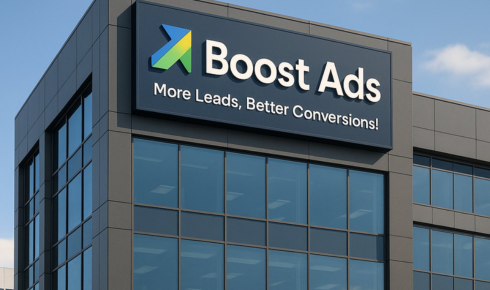Introduction: Why Listings Management Matters
In today’s competitive digital landscape, visibility is everything. When customers search for a business online, they expect to find accurate, consistent information—whether it’s on Google, Yelp, Bing, or hundreds of niche directories. This is where business listings management becomes vital. For brands of any size, ensuring that location data, contact details, and business hours are accurate across multiple platforms is no longer optional—it’s a necessity. Scaling smarter with automated systems allows businesses to reach more customers while avoiding the pitfalls of inconsistent or outdated information.
The Importance of Accuracy in Listings
Accurate listings directly influence customer trust and search engine rankings. When customers find mismatched phone numbers, outdated addresses, or conflicting store hours, they lose confidence and may choose a competitor. Search engines also penalize inconsistencies, pushing businesses lower in local rankings.
For example, imagine a small restaurant chain with three locations. If one Google Business Profile lists the wrong phone number while Yelp lists outdated hours, customers will get frustrated. On the other hand, consistent accuracy signals professionalism and reliability. To achieve this, businesses must first audit their existing listings, identify discrepancies, and update them across platforms.
Execution Tip:
- Begin by running a citation audit using tools like BrightLocal or Moz Local.
- Create a master spreadsheet containing the “official” version of your business’s NAP (Name, Address, Phone) information.
- Correct discrepancies one platform at a time, prioritizing high-traffic sites like Google, Bing, and Yelp before tackling smaller directories.
Automating for Efficiency and Scale
Manually updating dozens—or even hundreds—of listings is inefficient and prone to error. Automation streamlines this process, ensuring updates happen in real time across multiple directories. Modern listings management tools can push consistent data to hundreds of sites with a single update, saving time while reducing human error.
For example, a multi-location retail chain can use a listings management platform like Yext or Synup. When they update holiday hours in the system, the changes automatically reflect on Google, Facebook, and niche directories. This prevents customers from showing up at closed stores and preserves trust.
Execution Tip:
- Choose a listings management software that integrates with your existing CRM or CMS.
- Upload your master NAP data into the system.
- Schedule routine updates—especially for seasonal hours or promotions—so customers never encounter outdated information.
Leveraging Listings for Local SEO Growth
Listings don’t just provide contact details—they directly impact local search rankings. Google’s algorithm considers consistency and accuracy of business data when determining which companies to display in the “local pack” (the top three listings that appear on map searches). Businesses that manage listings effectively often see higher rankings, more visibility, and increased foot traffic.
Take, for instance, a fitness center with several branches. By ensuring every location has consistent, verified data across Google, Bing, and industry-specific sites, they increase their likelihood of showing up when someone searches “gym near me.” The result? More local leads and conversions.
Execution Tip:
- Verify each listing to prevent duplicates or fraudulent edits.
- Add keywords naturally into business descriptions and categories.
- Use UTM parameters to track traffic from directory listings back to your website and measure ROI.
Enhancing Customer Experience Through Listings
Customers expect convenience. Updated listings reduce friction in the buying process by helping people find correct addresses, directions, and service details quickly. Beyond the basics, some directories allow businesses to highlight amenities, post FAQs, and even integrate with reservation systems.
For example, a salon might list whether they offer walk-ins or require appointments, while a restaurant could showcase menus and delivery options. These extra touches can tip the scales in your favor when a potential customer is choosing between you and a competitor.
Execution Tip:
- Add high-quality photos to your listings to boost engagement.
- Include direct links to booking systems or menus where applicable.
- Regularly check and respond to customer reviews, which are often prominently displayed alongside business details.
Handling Multi-Location Complexity
For enterprises with multiple branches, managing listings becomes exponentially more challenging. Each location requires unique information (such as addresses and hours) while maintaining brand consistency. Automated listings platforms often provide dashboards that allow managers to control all locations from one hub.
Consider a dental practice with 15 offices across different cities. With an automated system, the marketing team can update practice hours for all locations in a single action while still personalizing each listing’s local attributes. This ensures accuracy while maintaining scalability.
Execution Tip:
- Designate a central “owner” for listings management, typically within marketing or operations.
- Implement role-based access in your listings platform so local managers can update details without disrupting corporate data.
- Use tagging and categorization to organize listings by region, service type, or franchise owner.
Monitoring, Analytics, and Continuous Optimization
Once listings are live, the work doesn’t stop. Regular monitoring is necessary to prevent unauthorized edits, duplicates, or outdated content from slipping through. Analytics tools can also reveal which directories drive the most traffic, clicks, or calls, helping you refine your strategy.
For instance, a hotel chain might discover that their TripAdvisor listing drives more conversions than Yelp. They could then allocate more time to optimizing TripAdvisor, adding photos, and encouraging guest reviews. Continuous monitoring ensures that listings remain not only accurate but also optimized for performance.
Execution Tip:
- Set up alerts for changes to listings data.
- Monitor metrics like call volume, website clicks, and map directions from each listing.
- Conduct quarterly reviews to update details and remove inactive directories.
Conclusion: Scaling Smarter With Automation
Accurate and automated listings management is not just about maintaining data integrity—it’s about scaling smarter, improving visibility, and creating seamless customer experiences. By leveraging audits, automation tools, SEO best practices, and continuous monitoring, businesses can stay ahead of competitors while ensuring customers always find the right information. Whether you’re a single-location brand or a multi-branch enterprise, embracing business listings management as a strategic priority ensures long-term growth and stronger customer trust.








